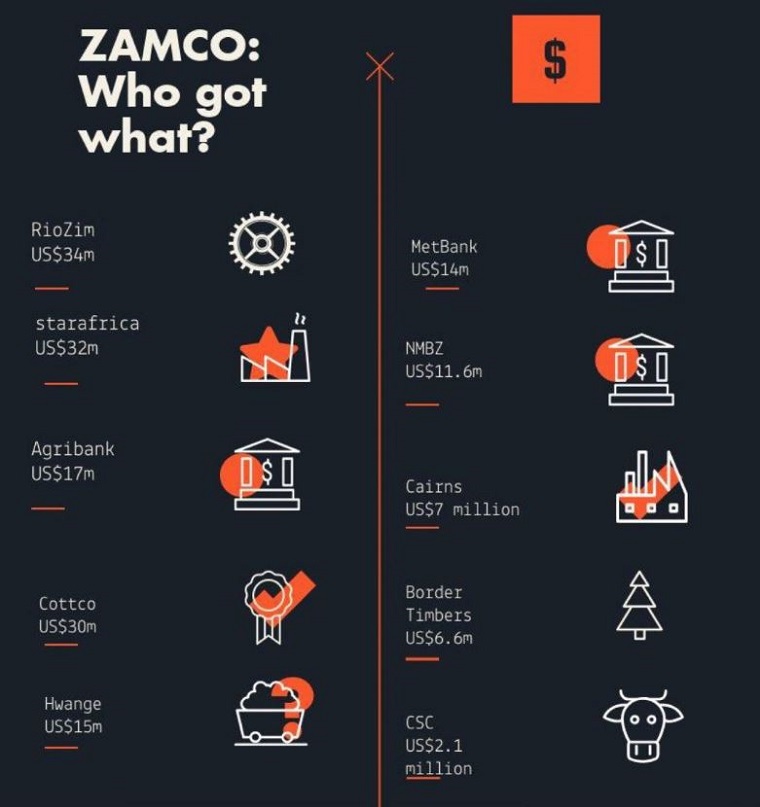With the help of the IMF, the RBZ then came up with the idea of ZAMCO. In simple terms, a new special company would be created to take up all these bad debts, so that banks would start on a clean slate.
At the time, RBZ said ZAMCO would be financed by offshore lines of credit, long-term loans and Treasury Bills. The central bank also expected pension funds, diaspora and even local and foreign investors and to help to finance the scheme.
How would ZAMCO work? It would take over loans and restructure them. The idea was that, once the companies that owed banks money were free of debt, they would recover and attract new investors. Banks, on the other hand, would also be in a better position. If not relieved of these bad loans, there would be a contagion effect affecting all banks.
The first phase of implementation included taking over the biggest 100 NPLs, targeting especially companies that RBZ saw as having the biggest chances of becoming viable if relieved of debts.
Here are some of the biggest companies to have their debts taken over:
As part of the restricting, ZAMCO used several options; the terms of the loans would be extended, interest rates would be cut, or some of the debt would be converted into equity. The latter, for example, is one of the options that RioZim took.
ZAMCO took out preference shares in the mining company. RioZim, starafrica and Cairns are some firms which avoided collapse after their debts were taken over by ZAMCO.
If the whole point was to lessen the NPL ratio, then it did work. From the peak of 20.45% in 2014, NPLs fell to 7.08 percent in 2017. But bad loans are rising again, ending 2018 at 8.25%. RBZ puts this down to “forward looking credit risk management tools adopted by banks in line with the IFRS 9 accounting standards, resulting in improvement of the banks’ risks controls and provisions coverage”.
ZAMCO has indeed freed banks and helped them become more profitable. Another positive outcome is that we now have a credit reference system, which helps banks make better decisions on who to lend their money to.
However, the downside was that ZAMCO was used to bailout companies like CSC that were already technically insolvent. In addition, the use of Treasury Bills created problems in the same financial market that ZAMCO was supposed to solve, something that worried the IMF, which had helped set up ZAMCO in the first place.
Continued next page
(369 VIEWS)



